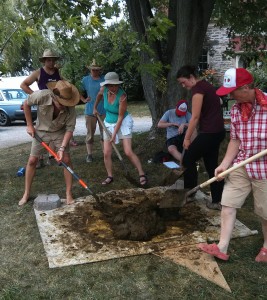
Since 1978, biodynamic (D), organic (O) and conventional (K for German: “konventionell”) production of arable crops such as wheat, potatoes, maize, soya and grass-clover leys has been compared at the same site in a practice-oriented trial design. In addition there is a stockless, non-organic variant receiving mineral fertilizer only (M). At the outset of the trial the aim was to clarify whether organic arable farming is feasible at all given natural pressures from weeds, pests and diseases and whether it would produce sufficient yields. The results showed that good, high-quality yields can indeed be achieved. (1)
Since the mid-1990s the focus has been on questions relating to sustainable farming, soil quality, and product quality. (2),(3),(4),(5),(6)
Fertile soil is the basis of all agricultural production. A number of research teams therefore aim at understanding the ecological processes taking place in the soil, at the soil surface, and above the surface within the model system that is the DOK Trial.
In brief: The most significant results to date
Yield levels of organic crops are approximately 20% below those receiving mineral fertilizer – while nutrient inputs in the organic and biodynamic systems are 65% lower for mineral nitrogen, 40% lower for phosphorus and 45% lower for potassium.
Long-term nutrient input/output accounting shows a nitrogen deficit for all systems; in other words all systems received less nitrogen as fertilizer than was withdrawn with the crop (the additional nitrogen withdrawn was derived from soil mineralization, nitrogen fixation by leguminous plants, and aerial deposition). For phosphorus and potassium the deficits are greater in the organic and biodynamic systems than in the conventional one. Therefore it is important to keep an eye on and regularly determine with soil analyses the available nutrients and nutrient reserves.
Organically grown crops require 30-50% less energy per unit area (including energy for the production of fertilizers and pesticides). Even though yields in the conventional system are higher per unit area, energy usage per unit of yield is lower by 19% in the organic systems.
In the biodynamic system, soil organic matter (humus) content remained stable for the first 21 years of the trial while it declined in all other systems. Differences in this respect between the biodynamic and the purely mineral system are significant. (2)
More detailed information on the DOK Trial: The trial site
The trial site is located in the Leimen valley near Basel, Switzerland at 300 metres above sea level. Mean temperature is 9.5°C and mean annual precipitation is 792 mm. The soil is a haplic luvisol on deposits of alluvial loess.
The experiment has a randomized split-split-plot design with four field replicates. Every year, three crops of the seven-year crop rotation are grown side-by-side at two fertilization intensities each (D1, D2, O1, O2, K1, K2). In addition to the conventional treatment M which only receives mineral fertilizer (only at level 2 fertilization intensity), one treatment (N) has received no fertilizer at all since the beginning of the trial. There are thus a total of 96 plots, each plot being 100m² (5m x 20m) in size. Since 1991 the level 2 fertilization intensity, a level customarily used by farmers, corresponds to 1.4 LU/ha in all systems while level 1 corresponds to 0.7 LU/ha. Since 1985 the treatments K1, K2 and M have been managed in accordance with the requirements of integrated production. (7)
The cropping systems being compared in the trial differ primarily in terms of fertilizer usage and plant protection, while crop rotations, soil cultivation and choice of cultivars are the same across all treatments.
Yields
Over the first 21 years of the trial, there was a 50% lower input in fertilizers and fossil energy and a complete absence of chemically-synthesized plant protection products in the organic cropping systems compared to the conventional system, whereas mean crop yield was only 20% lower.
Potato yields showed the biggest comparative shortfall, with yields in the organic systems being 34-42% lower than in the conventional plots. This trend continued in the fourth crop rotation period (1999-2005). The reasons for this yield reduction are the crop’s high nutrient demand over a relatively short growing period and the potatoes’ susceptibility to diseases (late blight on foliage and tubers). However, in the 2006-2012 period there was only a mean yield reduction of approximately 22%.
For winter wheat, yield shortfalls were in the order of 11-14% in the 1985-2005 period and 33% in the 2005-2012 period (fertilization intensity had been increased in the conventional treatments).
Mean soyabean yields over six cropping years in the 1999-2012 period were at par between the organic and conventional treatments (2.8 t DM/ha).
Over the same period, silage maize yields in the organic systems were 11% lower than those in the conventional system (17.5 t DM/ha and 19.6 t DM/ha respectively).
Yields from the organic grass-clover leys were 11-13% lower than their conventional counterparts in the 1978-1998 period, 5% higher in the 1999-2005 period, and approximately 11% lower again between 2006 and 2012.
In summary, organic yield levels over 35 years of the trial and taken together for all crops were approximately 80% of those produced by the conventional system.
Nutrient efficiency and energy efficiency
The efficiency of the utilization of existing resources is an important indicator of the sustainability of a production system. For assessment purposes, all factors contributing to the production of a unit of yield are converted into energy units. A comparison of energy efficiency must consider not only direct energy inputs (tractor fuel) but also indirect energy inputs required to produce bought-in farming inputs (fertilizers, plant protectants).
Organic systems require slightly higher energy inputs for infrastructure and machinery than conventional systems (e.g. for hoeing and harrowing) but significantly less energy for fertilizer and pesticides.
The energy input per unit of yield (harvested crop) in the 1978-1998 period was 19% lower in the organic systems than that of their conventional counterpart, and 30-50% lower per unit area.
Soil fertility, soil life, and species diversity
Thanks to the long-term nature of the trial it has been possible to observe the impact of the different production methods on the soil. The results have shown, for example, that the organically and biodynamically managed plots contain 25% more soil micro-organisms and exhibit higher long-term soil fertility than the conventional plots (8),(9),(10). Plants in the organically and biodynamically managed plots are more strongly colonized by mycorrhiza (symbiotic association between fungi and plant roots) and a greater number of mycorrhizal fungi species are involved (higher biodiversity) (11), (12). In the springtime when the soil is not yet fully covered by vegetation, differences in the soil structure are also evident. This is due to differences in the types and quantities of organic fertilizers applied and the soil pH (13). Organic management also has a positive impact on the species diversity of predatory epigaeic arthropods (14), (15).
Related projects
As the DOK Trial deals with entire systems it does not allow for assertions to be made on the effect of biodynamic preparations on their own. It was for this reason that the Frick trial on preparations and soil was established, as part of which the biodynamic preparations are studied as one of the factors varied in the factorial design.
Using the DOK Trial as a model, farming systems comparisons have also been established in three countries in the tropics and are managed by FiBL.
Current FiBL projects as part of the DOK Trial
Research teams all over Europe work on questions addressed with the help of the DOK Trial. To date approximately 200 publications have resulted from this trial.
At present, seven doctoral theses under the Swiss National Science Foundation’s National Research Programme NRP 68 are being prepared based on the DOK Trial.
FiBL is currently conducting, or has recently concluded, a number of projects or sub-projects as part of the DOK Trial, a selection of which is given below:
- Agronomic performance of the different cropping systems
- Microbial diversity and carbon fluxes
- Influence of biocontrol organisms on soil processes (NRP 59 – Soil)
- Mycorrhizal diversity and functionality
- Infrastructures for ecosystem research (contribution to the transnational EXPEER database)
- Greenhouse gas emissions and carbon sinks in Swiss agricultural soils (FOEN – Greenhouse Gas Emissions)
- Populations of denitrifying microorganisms (NRP 68)Recently concluded projects at FiBL (selection):
- Agroscope Reckenholz-Tänikon
- University of Basel: Prof. Dr. Thomas Boller, Prof. Dr. Andres Wiemken, Dr. Franz Conen
- University of Zurich: Prof. Dr. Rainer Schulin, Prof. Dr. Emmanuel, Frossard, Dr. Astrid ObersonFunding
- Basic grant for management of the DOK Trial: Swiss Federal Office for Agriculture
Publications
Scientific journal articles
- Mäder P, Fliessbach A, Dubois D, Gunst L, Fried P, Niggli U. Soil fertility and biodiversity in organic farming. Science. 2002;296:1694-7.
- Fliessbach A, Oberholzer H-R, Gunst L, Mäder P. Soil organic matter and biological soil quality indicators after 21 years of organic and conventional farming. Agriculture, Ecosystems & Environment 2007;118:273-84.
- Langenkämper G, Zörb C, Seifert M, Mäder P, Fretzdorff B, Betsche T. Nutritional quality of organic and conventional wheat. Journal of Applied Botany and Food Quality 2006;80:150-4.
- Mäder P, Hahn D, Dubois D, Gunst L, Alföldi T, Bermann H, et al. Wheat quality in organic and conventional farming: results of a 21-year old field experiment. Journal of the Science of Food and Agriculture 2007;87:1826-35.
- Hildermann I, Thommen A, Dubois D, Boller T, Wiemken A, Maeder P. Yield and baking quality of winter wheat cultivars in different farming systems of the DOK long-term trial. Journal of the Science of Food and Agriculture 2009;89(14):2477-91.
- Zörb C, Niehaus K, Barsch A, Betsche T, Langenkämper G. Levels of compounds and metabolites in wheat ears and in grains under special consideration of organic and conventional agriculture. Journal of Agricultural and Food Chemistry 2009b;57:9555-62.
- Mäder P, Fliessbach A, Dubois D, Gunst L, Jossi W, Widmer F, et al. The DOK experiment (Switzerland). In: Raupp J, Pekrun C, Oltmanns M, Köpke U, editors. Long-term Field Experiments in Organic Farming International Society of Organic Agriculture Research (ISOFAR), Scientific Series. Berlin: Verlag Dr. Köster; 2006. p. 41-58.
- Fliessbach A, Mäder P, Niggli U. Mineralization and microbial assimilation of 14C-labeled straw in soils of organic and conventional agricultural systems. Soil Biology and Biochemistry 2000;32:1131-1139.
- Esperschütz J,Gattinger A, Mäder P, Schloter M, Fliessbach A. Response of soil microbial biomass and community structures to conventional and organic farming systems under identical crop rotations. FEMS Microbiology Ecology 2007;61(1):26-37.
- Mäder P, Edenhofer S, Boller T, Wiemken A, Niggli U. Arbuscular mycorrhizae in a long-term field trial comparing low-input (organic, biological) and high-input (conventional) farming systems ina rop rotation. Biology and Fertility of Soil 2000;31:150-6.
- Oehl F, Sieverding E, Ineichen K, Mäder P, Boller T, Wiemken A. Impact of land use intensity on the species diversity of arbuscular mycorrhizal fungi in agrooecosystems of central Europe. Applied and Environmental Microbiology 2003;69:2816-24.
- Oehl F, Sieverding E, Mäder P, Dubois D, Ineichen K, Boller T, et al. Impact of long-term conventional and organic farming on the diversity of arbuscular mycorrhizal fungi. Oecologia 2004;138:574-83.
- Siegrist S, Schaub D, Pfiffner L, Mäder P. Does organic agriculture reduce soil erodibility? Agriculture, Ecosystems and Environment 1998;69:253-64.
- Pfiffner L, Niggli U. Effects of bio-dynamic, organic and conventional farming on ground beetles (Col. Carabidae) and other epigaeic arthropods in winter wheat. Biological Agriculture and Horticulture 1996;12:353-64.
- Pfiffner L, Mäder P. Effects of Biodynamic, Organic and Conventional Production Systems on Earthworm Populations. Biological Agriculture and Horticulture 1997;15:3-10.
- Hildermann I, Messmer M, Dubois D, Boller T, Wiemken A, Mäder P. Nutrient use efficiency and arbuscular mycorrhizal root colonization of winter wheat cultivars in different farming systems of the DOK long-term trial. Journal of the Science of Food and Agriculture 2010;90:2027-38.
- Fliessbach A, Messmer M, Nietlispach B, Infante V, Mäder P. Effects of conventionally bred and Bacillus thuringiensis (Bt) maize varieties on soil microbial biomass and activity. Biology and Fertility of Soils 2012;48:315-24.
- Fliessbach A, Nietlispach B, Messmer M, Rodríguez-Romero A-S, Mäder P. Microbial response of soils with organic and conventional management history to the cultivation of Bacillus thuringiensis (Bt)-maize under climate chamber conditions. Biology and Fertility of Soils 2013;49:829-837.
- Arncken CM, Mäder P, Mayer J, Weibel FP. Sensory, yield and quality differences between organically and conventionally grown winter wheat. Journal of the Science of Food and Agriculture 2012;92(14):2819-25.
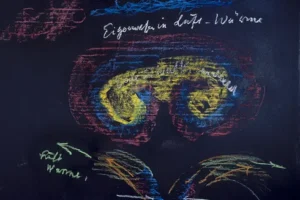
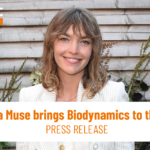
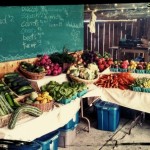
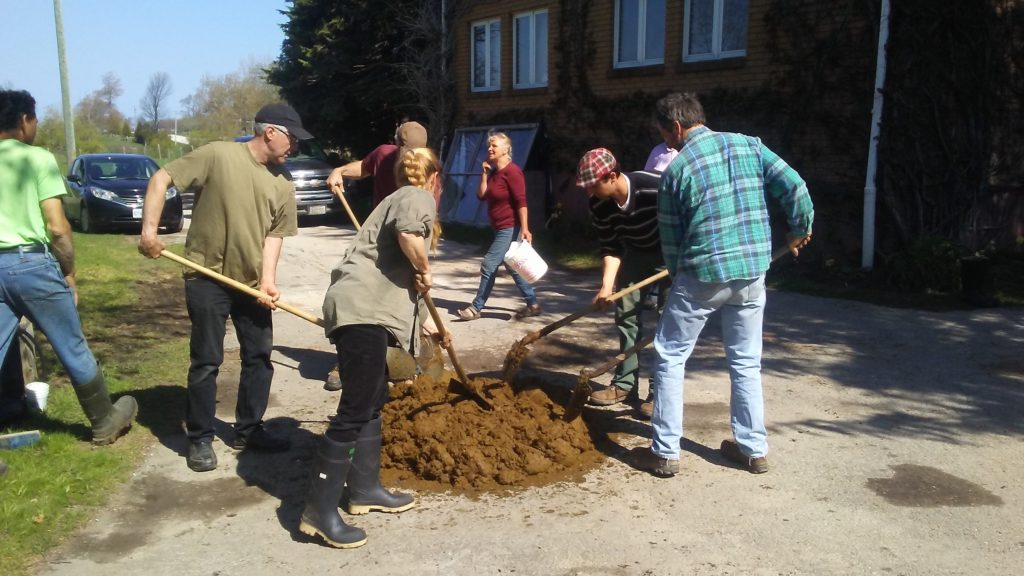
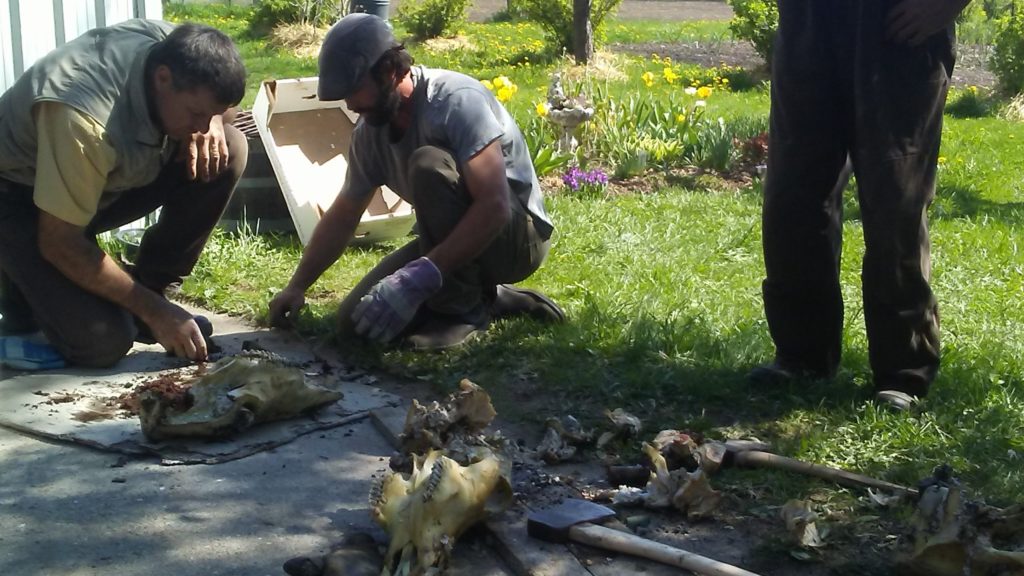
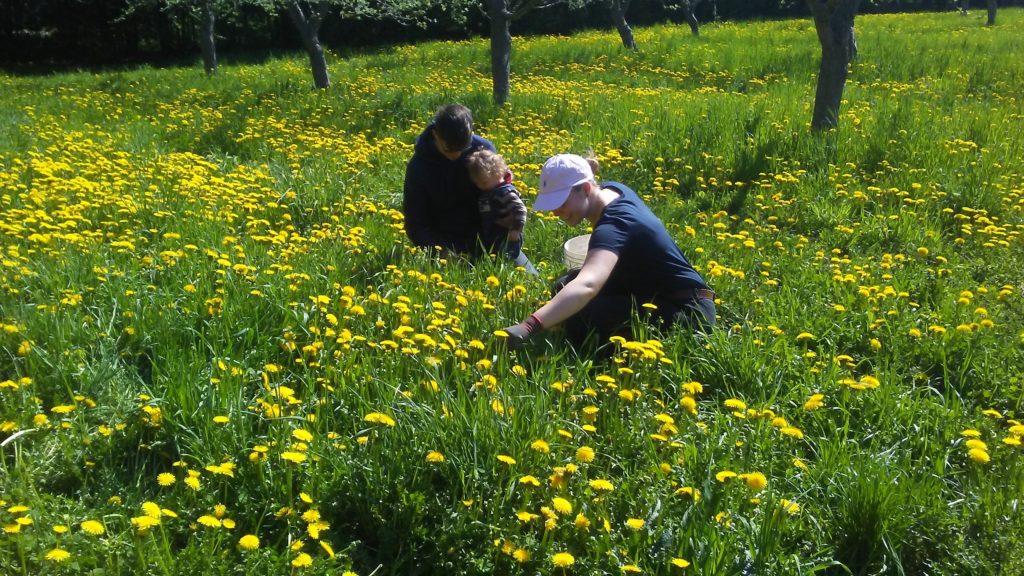
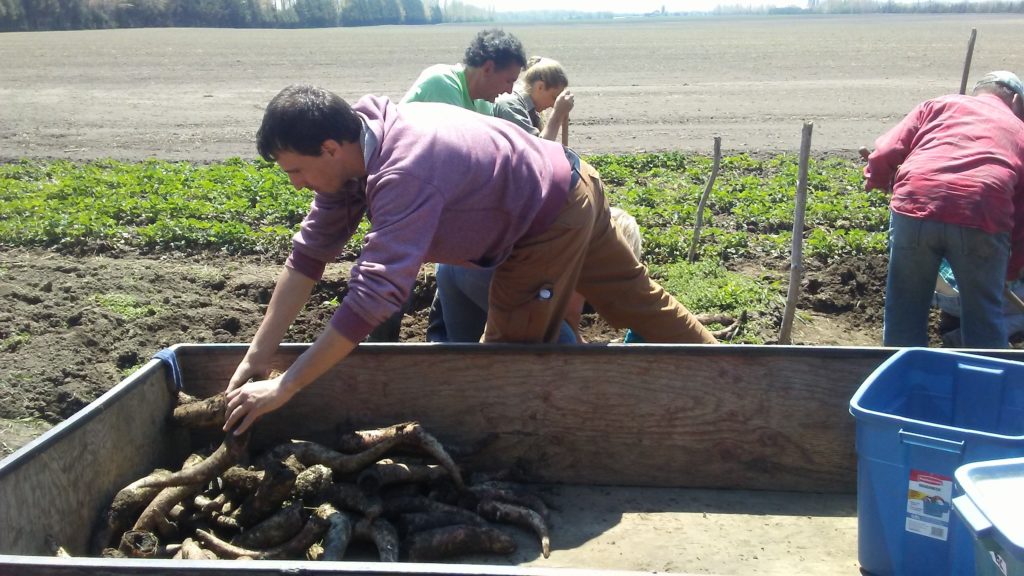


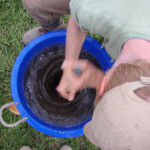 The 500 (Horn Manure) is mixed about 1 oz (28 grams) in two gallons/ 8-10 liters of warm (preferably) rain water any time after 3pm. Stir first one way until you get a good vortex in the pail, then reverse the stirring in the other direction until you get a good vortex again. You continue stirring one way then the other for one hour. By doing this you are potentizing the mixture, thereby creating a homeopathic substance. The 500 is sprayed on the ground in large droplets. We often just use a handful of cedar branches or a hand broom to flick the mixture around. The 500 promotes root growth and aids humus formation, thus improving the water-holding capacity of the soil and stimulating the microbes to help the plant take up what it needs. Use this spray after you have put down your compost and before you plant your plants or seeds. The 500 can be sprayed a second time later in the season. If you have already planted, then spray on the ground between the rows.
The 500 (Horn Manure) is mixed about 1 oz (28 grams) in two gallons/ 8-10 liters of warm (preferably) rain water any time after 3pm. Stir first one way until you get a good vortex in the pail, then reverse the stirring in the other direction until you get a good vortex again. You continue stirring one way then the other for one hour. By doing this you are potentizing the mixture, thereby creating a homeopathic substance. The 500 is sprayed on the ground in large droplets. We often just use a handful of cedar branches or a hand broom to flick the mixture around. The 500 promotes root growth and aids humus formation, thus improving the water-holding capacity of the soil and stimulating the microbes to help the plant take up what it needs. Use this spray after you have put down your compost and before you plant your plants or seeds. The 500 can be sprayed a second time later in the season. If you have already planted, then spray on the ground between the rows.